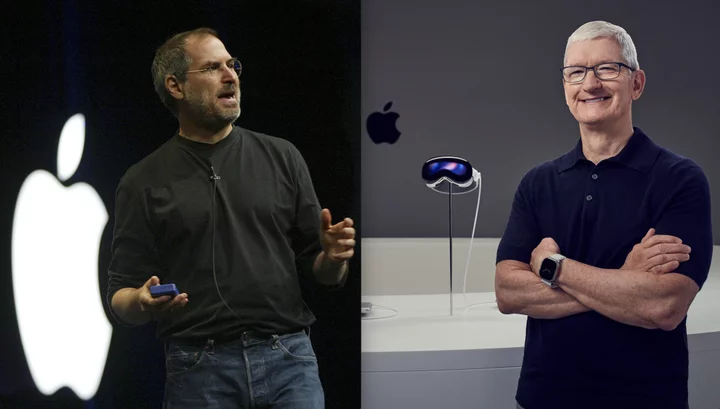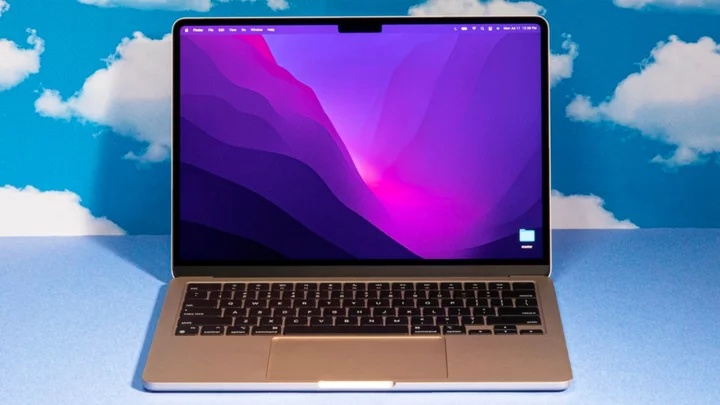Irony alert: the phrase "reality distortion field," famously applied to Apple co-founder Steve Jobs, is itself a distortion of reality. Apple executive Bud Tribble claims he took it from a 1966 Star Trek episode, "The Menagerie," about reality-warping aliens, in which the words "distortion field" do not appear. But because he said so, the internet — including Wikipedia — has decided this origin story is the gospel truth.
That said, there's no trouble with Tribble's characterization. Jobs really did have an unshakeable and infectious certainty that his idealized vision of computing was superior to the supposed facts on the ground. The Macintosh team saw it in his ridiculous demands and deadlines. So did the iMac team, at whom Jobs literally screamed and cried about the then-impossible task of removing its CD tray. Many of us at the iPhone unveiling in 2007, six months before the product launched, sneered at its weird on-screen keyboard, its $500 price tag (you could buy two BlackBerrys for that!), and its so-so single cellphone carrier, Cingular.
SEE ALSO: Revisiting the iPhone launch keynote, 15 years onIn each of those cases, the reality distortion field became our Star Trek future sooner or later. The original Macintosh, rushed and underpowered and overpriced, was a commercial failure that nevertheless changed the face of computing forever, just like Jobs said it would. The second-generation iMac swallowed disks without a tray. And the iPhone, thanks to its true believers and its rapid iteration, turned struggling Apple into the world's most profitable company.
If you built an expensive version 1.0 as close to perfect as possible and wowed the public with it, Jobs knew, the carriers and the developer-built apps (originally known as "widgets") would come. That in turn would make version 2.0, and beyond, an increasingly must-have gadget.
Viewed through the Jobs-style distortion lens, this week's splashy but baffling Apple Vision Pro announcement makes a lot of sense. The $3,500 price tag? That's actually half of what the original Macintosh cost, in today's dollars. Developers and hardcore Apple fans will pay, and their creativity and feedback will vastly improve later, lighter versions. The slick but oddly dystopian-looking videos? That's the equivalent of the Macintosh Super Bowl ad, designed to get people talking months ahead of launch (the Vision Pro is coming to the U.S. market in early 2024).
Apple's Vision Pro AR headset, revealed at WWDC 2023. Credit: AppleBringing Disney CEO Bob Iger on stage to talk about the Vision Pro may seem like an odd choice; after all, few of us are likely to watch Disney+ on AR headsets rather than TV screens. Even with a few augmented reality bells and whistles, passive entertainment is not the point of buying a Vision Pro. Focusing on it left Apple open to the charge, as expressed by Meta's Mark Zuckerberg, that "every demo was a person sitting on a couch by themself."
So why do it? Well, first because it's an easy way to show off the quality of the retina display: good enough to watch movies, in theory! But it also showcased Disney's involvement, which happened for the same reason that Jobs brought the CEOs of Google and Yahoo, then the two search giants, to his iPhone unveiling: the more heavyweights involved, the more inevitable the product seems to the mainstream user, and the more chatter you'll hear about it around the watercooler. There's no heavyweight brand like Disney — nor, thanks to Iger and Jobs' longstanding friendship, any more friendly to Apple.
Cook's in the kitchen
Jobs' successor, Tim Cook, had until this week provided continuity in everything except the reality distortion field. Essentially, what Apple has released during the CEO's tenure is multi-touch screens of different sizes, from the smallest Watch to the largest iPad, plus Macs with minor tweaks and a streaming service that's hard to differentiate from its competitors.
Tim Cook speaks before the start of Apple's WWDC 2023 in Cupertino, California. Credit: Justin Sullivan/Getty ImagesNot that these haven't been lucrative products. But Jobs' slogan for Apple wasn't "think similarly." He was keen to push the boundaries of what well-made technology can do for a simplicity-loving mainstream audience, even when he didn't know exactly how we'd use the wide open spaces of untraversed territory he was opening up.
The Vision Pro, thankfully, has this approach written all over it. Its lack of a handheld controller, its total reliance on hand recognition and eye tracking — users simply pinch or look at something to select it — recalls what Jobs said about the iPhone not having a stylus: "We’re going to use the best pointing device in the world. We’re going to use a pointing device that we’re all born with — born with ten of them." (In this case, add two eyes and make it 12.)
Credit: AppleUse them for what, exactly? Jobs didn't know he was enabling a future of thumb-scrolling through news feeds (his demos were a lot more about pinch-and-zoom). Nor did he need to. The purpose of the reality distortion field is to create true believers, draw them into the vision, and let them figure it out.
With the Vision Pro, Apple set out to make the most well-designed, most simple, most high-tech headset possible with today's technology. It made the headset mixed-reality — AR or VR — because that allows for the most possibilities. Starting with AR makes it less scary for the average user. This is something Zuckerberg does not understand; the Meta CEO appears to be betting most people want want to escape to a virtual world of digital avatars.
Perhaps we would, if Zuck had a reality distortion field in his arsenal. The underwhelming reaction to his Quest headset and metaverse suggests he does not.
SEE ALSO: The Meta Quest 2 just got $100 cheaperIs the Vision Pro still just a bit too clunky for an Apple product? Sure it is. There are the equivalent of CD trays all over this thing — the strap, the inevitable comparison to ski goggles. They will go away. When you step into the reality distortion field, it's easy to see a future where the ongoing (if slower) progress of Moore's law shrinks this level of technology into a cool pair of glasses.
The clunkiness is why you won't see any pictures of Cook wearing the headset, and why Apple didn't allow journalists to take candid photos of themselves trying it out. That would spoil the delicate balancing act of the distortion field, which thrives on a little bit of mystery and imagination.
The buzzy response — fed by memes and jokes and disbelief as much as by the cautiously enthusiastic reviews — suggests it's working. In a moment, Cook steered the entire tech world's conversation away from AI (which he steadfastly refused to even mention), and towards a vision of a future where we do our computing through AR interfaces. Now that's a Star Trek-style reality distortion field.









